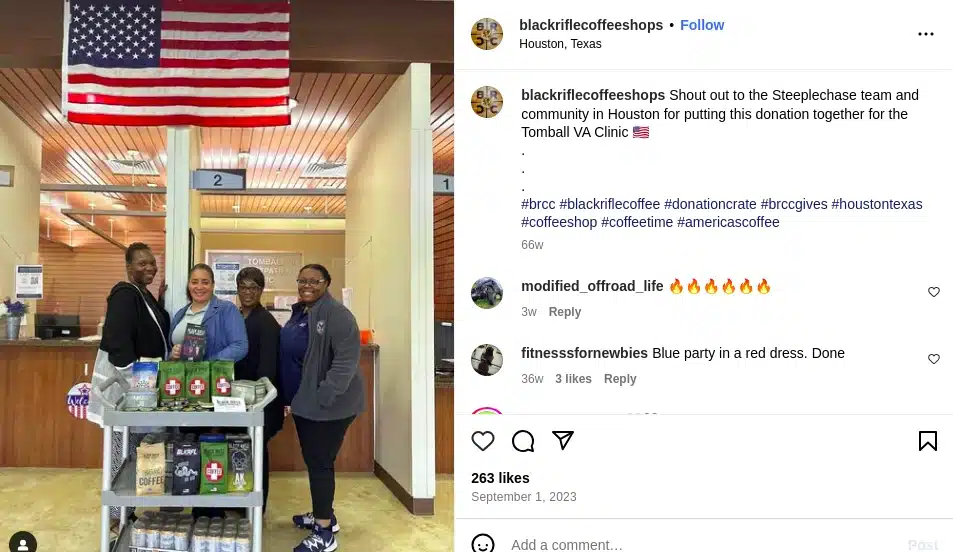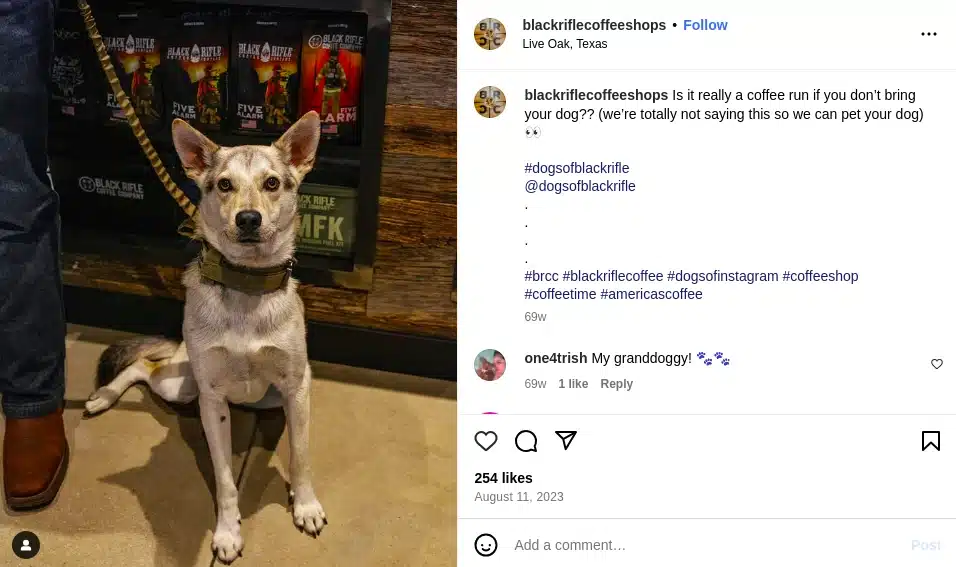Share of Voice (SOV) in social media measures how much of the conversation around a particular industry, topic, or keyword is about your own brand compared to competitors. It reflects your brand’s visibility, impact, and influence across major social media networks.
To track SOV, marketers analyze social media mentions, brand communications, and customer engagement across various marketing channels. It can be measured for PPC keywords, SEO keywords, or specific discussions on social media, providing insights into a brand’s competitive standing and audience reach.
How to measure share of voice across marketing channels
Calculating SOV is pretty simple: your overall brand voice volume is divided by the total market brand volume. What’s tricky here is to define the market and find out the impact of your and competing brands, on all digital marketing fronts.
Let’s look at how it’s typically done with various marketing channels:
- Social media share of voice measurement
- SEO share of voice calculation
- PPC share of voice assessment
- PR share of voice estimation
1. Social media share of voice measurement
There are multiple ways to measure social media share of voice because you can measure it against different brand metrics, yet the share of voice formula stays the same:
SOV = your brand’s metric/competitor brands’ metrics*100%
The social media metrics themselves can differ. Here are a few best picks:
- Brand mentions
- Branded hashtag use
- Post reach
- Involvement in industry-related conversations
To notice those conversations and mentions on social media, you’ll need social media monitoring tools.
2. SEO share of voice calculation
In SEO, the SOV is calculated for a keyword with a traffic forecast. The formula for measuring SEO share is this: SOV = your site’s traffic forecast for a keyword/traffic forecast of other pages in the top 20*100%
The higher your brand’s position is on the search engine result page, the more SOV you have. You can calculate this metric with SEO tools like the Rank Tracker by SE Ranking. It tracks your site’s traffic forecast for a keyword or a keyword group and compares it with the competing pages in the top 20.
3. PPC share of voice assessment
Measuring the share of voice in paid advertising has a straightforward formula: SOV = your advertising volume/competing advertising volume*100%
To calculate it, narrow the scope to the list of relevant keywords that you run your campaign on or a list of keywords your competitors use. Calculate how many clicks or exposures your ads get compared to competing ads for the same keyword group.
You can do it with most PPC tools like your Google Ads account.
4. PR share of voice estimation
Some companies include social media in PR SOV calculations. Since we focus on social media specifically in this post, PR share of voice means the share of news media and blog coverage you receive compared to the competition.
The formula for measuring PR share of voice is: SOV = your brand media mentions/competitor media mentions*100%
Narrow it to a few hundred important websites or scan the whole web to get a more detailed picture. In either case, you’ll need a brand monitoring tool to be sure of the quality of your share of voice data points.
Reasons to concentrate on tracking social share of voice
Social media SOV isn’t just a nice-to-have metric, but a direct way to measure your brand’s performance. Tracking social media mentions and your brand’s share of the conversation helps you see where you stand against competitors and where there’s room to grow.
Why does this matter? Because understanding your share of voice gives you the power to make smarter marketing moves.
Here’s how to understand your current share of voices:
- See where your brand stands – Are you leading the conversation or getting lost in the noise?
- Spot growth opportunities – Identify gaps in your market share and adjust your marketing strategy.
- Improve your social media campaigns – Use social media analytics tools to track the impact of your marketing campaigns.
- Fine-tune your messaging – Monitor customer engagement to understand what resonates with your audience.
- Balance organic and paid strategies – Use insights to decide when to invest in paid advertising or double down on organic search traffic.
By keeping an eye on social media platforms, you can also refine your social media campaigns and adjust your different marketing channels to maximize reach. Plus, using share of voice tools makes it easier to measure your brand’s visibility and find new ways to stand out.
Bottom line: tracking your share of voice isn’t just about numbers, it’s also about understanding how people talk about your brand. Sentiment analysis, context, and engagement levels can reveal whether your brand is gaining positive attention or if there’s room to improve. The more insights you gather, the better you can refine your social media strategy and stay ahead of the competition.
To increase your share of voice on social media, you need to be able to cut through the noise. A low share of voice often means limited reach and engagement, so you need to find ways to stand out.
The beauty of this marketing channel is that it doesn’t require constant high spending to increase SOV, like in paid advertising. It requires a strategic, creative approach.
Here’s how you can increase a brand’s social share of voice:
- Humanize your brand
- Create quality content
- Focus on engagement and conversations
- Be always “on”
- Engage in communities and develop yours
- Collaborate with other brands
- Encourage user-generated content
1. Humanize your brand
The first thing to improve your share of voice on social media is to add a human touch to your brand tone. This is essential to stand out as most brands on social will sound corporate, boring, and ultimately, off.
Out of all people who have unfollowed a brand on social media, 68% cite posting inauthentic content as the reason. So, fostering a strong brand voice that sounds human is important. How do you create this consistent tone?
The most effective way is putting a human face behind the brand. Putting your employees or hiring an energetic content creator to be the representative of your brand can increase trust and create a consistent brand voice.

Use storytelling to share moments from your team’s daily life, behind-the-scenes content, or genuine customer feedback. This helps humanize your brand and create an authentic connection with your audience.


For consistency, establish a brand style guide to ensure all content aligns with your voice and messaging, whether it’s curated or created in-house.
2. Create quality content
Inauthentic content triggers people to unsubscribe, but so does boring content. Creating quality content in mass is the biggest struggle for many brands. If you can find a way to make your content interesting, it will promote your brand to popularity as social media users will love it, engage with it, and boost it in the algorithm.
Good social media voice examples always have one of these ingredients:
- Humor
- Inspiration
- Authenticity
- Sharing unique knowledge
- Starting a conversation
To ensure your content works across different industries, consider these general approaches:
- Use storytelling to humanize your brand personality.
- Share behind-the-scenes content to create a more personal connection.
- Educate your audience with practical tips or industry insights.
- Use interactive content like polls or Q&A sessions to boost engagement.
- Showcase user-generated content to build community trust.


Think about what makes your company and your content interesting, take inspiration from content idea lists, and experiment. This will lead you to find a format that brings in users and increases the share of voice.
3. Focus on engagement & conversations
One of the best ways to increase your brand’s organic reach is to encourage meaningful engagement. The more people interact with a post (commenting, sharing, or tagging others), the more the platform’s algorithm recognizes it as valuable content, expanding its reach.
But people won’t engage with just any post.
Here’s how to spark conversations in line with your unique brand voice:
- Ask the right questions. Instead of generic prompts, tailor your questions to your industry. For example, a SaaS company could ask, “What’s one productivity tool you can’t live without?” rather than a broad “How’s your day going?”
- Leverage your team. Get employees, brand ambassadors, or power users to kick off discussions in the comments, making it easier for others to join.
- Use visual cues. Posts with text overlays on images, polls, or carousel formats tend to catch attention faster than plain text.
- Engage in real-time. Respond quickly to comments to keep the conversation going, especially in the first hour after posting.
Instead of just broadcasting content, think about how to invite participation and create a two-way conversation. That’s how you build an engaged community, not just an audience.


There are two more ways you can improve engagement and gain trust with your audience.
The first is doing live sessions. Here’s where your brand representative comes in handy, who can speak for your brand and answer questions users have for your brand.
The other is finding conversations that relate to your industry online and engaging in them from the brand account. Use social listening tools to find these conversations in the comment sections.












